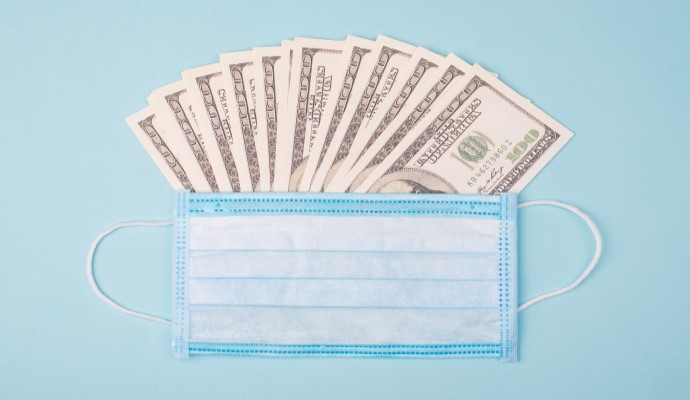What Contributes to High US Healthcare Spending?
US healthcare spending is nearly twice as much as the average in peer nations, driven by inpatient and outpatient payments, prescription drug prices, and administrative costs.

Source: Getty Images
- Prescription drug prices are contributing to high US healthcare spending, but are not the top driver of costs, according to a recent analysis from the Peterson-KFF Health System Tracker.
The analysis found that the US spent twice as much on healthcare in 2018 compared to nine comparable countries, driven mostly by higher payments to hospitals and physicians.
The comparable countries included Austria, Belgium, Canada, France, Germany, Netherlands, Sweden, Switzerland, and the United Kingdom.
Data from the Organization for Economic Co-operation and Development (OECD) for the 10 countries showed that healthcare spending in the US was about $10,637 per person versus an average of $5,527 per person in the other countries.
The largest healthcare spending category across all the countries was inpatient and outpatient costs, which according to the analysis, included payments to hospitals, clinics, and physicians for services and fees such as primary care or specialist visits, surgical care, and facility and professional fees.
However, the US spent $6,625 per person on inpatient and outpatient payments, while comparable countries spent an average of $2,718 per person. Spending on inpatient and outpatient care also accounted for about 62 percent of US healthcare spending in 2018 compared to about half in the other countries in the analysis.
Overall, spending on inpatient and outpatient care represented about three-quarters (76 percent) of the difference in spending between the US and other countries in the analysis.
The second greatest driver of US healthcare spending in 2018 was prescription drug and medical good costs.
The analysis found that the US spent an average of $1,397 per person on prescription drugs and medical goods, which included over the counter and clinically delivered pharmaceuticals as well as durable and non-durable medical equipment.
Prescription drug costs in the US was over $500 more than the average in comparable countries ($884 per person). The costs also accounted for 13 percent of all US healthcare spending in 2018 versus 16 percent in comparable countries.
Rounding out the top three drivers of US healthcare spending was administrative costs.
The US spent an average of $937 per person on administrative costs, accounting for 9 percent of all healthcare spending in 2018, according to the analysis.
About half (53 percent) of administrative costs in the US stemmed from private payer costs and the rest from governmental health programs like Medicare and Medicaid, the analysis uncovered. The costs did not account for administrative spending by providers.
Administrative costs in the US were over four times more per person than in comparable countries, which spent an average of $201 per person, researchers added.
This difference accounted for about 14 percent of the gap between US healthcare spending and spending in the other countries. It was the second highest contributor to difference in spending, followed by prescription drug and medical goods costs (10 percent).
The rest of the $10,637 in US healthcare spending was spent on long-term care ($516), preventative services ($309), and other costs, such as ancillary services and other types of care and medical goods uncaptured in the other spending categories ($854).
The only spending category that the US spent less on compared to comparable countries was long-term care. The other countries spent an average of $1,111 on long-term care in 2018, making it the second greatest driver of healthcare spending for those countries behind inpatient and outpatient care.
Identifying the top drivers of US healthcare spending is key to slowing the growth of healthcare costs in the US, which continues to significantly outpace growth in comparable countries, the analysis showed.
The Trump Administration has targeted prescription drug costs to reduce healthcare spending, with a recent executive order seeking to implement a most-favored-nation pricing scheme across Medicare.
While prescription drug costs are a key driver of US healthcare spending, it is not the top driver.
“Drug prices are, indeed, higher in the US than in other high-income countries, but as this analysis shows, reducing drug spending alone would have a comparatively smaller effect on the gap between health costs in the US and comparable countries,” the authors of the analysis wrote.
The top contributor to the difference in costs between the US and comparable countries is spending on inpatient and outpatient care, the authors highlighted.
“Yet, people in the US use less care and have worse health outcomes than those in peer nations,” they stated.
